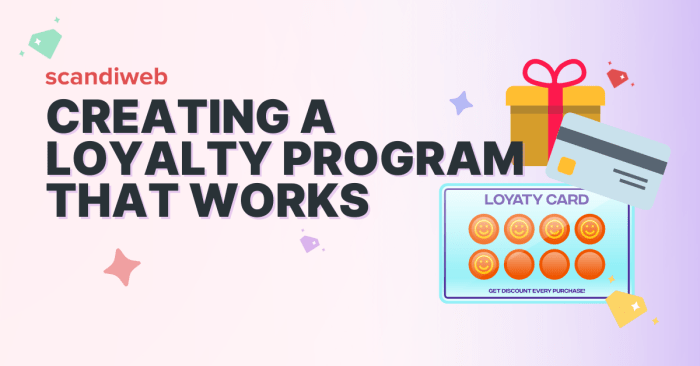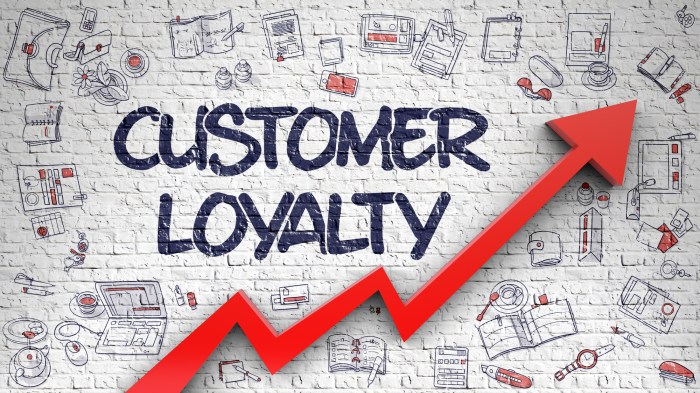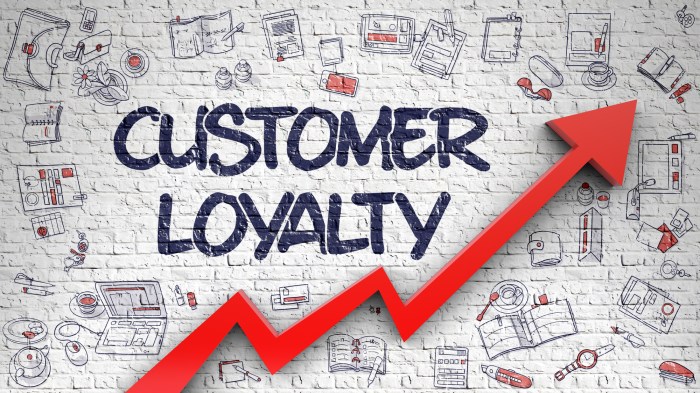Creating a Loyalty Program is like setting the stage for a blockbuster movie – full of excitement, rewards, and anticipation. Get ready for a journey into the world of customer loyalty like never before!
Loyalty programs are crucial for businesses looking to retain customers and boost engagement. By understanding the ins and outs of loyalty programs, you can take your company to new heights.
Introduction to Loyalty Programs
A loyalty program is a marketing strategy designed to encourage customers to continue purchasing goods or services from a specific company. It involves offering rewards, discounts, or other incentives to loyal customers who frequently make purchases.
Benefits of Implementing a Loyalty Program
Implementing a loyalty program can have numerous benefits for a company, including:
- Increased customer retention: Loyalty programs help retain existing customers by providing incentives for them to continue purchasing from the company.
- Higher customer engagement: By offering rewards and incentives, companies can increase customer engagement and interaction with their brand.
- Boost in sales: Loyal customers are more likely to make repeat purchases, leading to increased sales and revenue for the company.
- Competitive advantage: A well-designed loyalty program can differentiate a company from its competitors and attract new customers.
Impact of Loyalty Programs on Customer Retention and Engagement
Loyalty programs have a significant impact on customer retention and engagement. According to research:
“A 5% increase in customer retention can lead to a 25-95% increase in profits.”
This statistic highlights the importance of implementing a loyalty program to retain customers and drive business growth.
Types of Loyalty Programs

When it comes to loyalty programs, there are several types that businesses can implement to retain customers and drive repeat sales. Let’s explore some of the most common types and their advantages and disadvantages.
Points-Based Loyalty Programs
Points-based loyalty programs are one of the most popular types where customers earn points for purchases which can be redeemed for rewards or discounts. Examples include Starbucks Rewards and Sephora Beauty Insider.
Tiered Loyalty Programs
Tiered loyalty programs offer different levels of benefits based on a customer’s spending or engagement. Customers can unlock higher tiers by reaching certain milestones. A successful example is the Marriott Bonvoy program.
Paid Loyalty Programs
Paid loyalty programs require customers to pay a fee to access exclusive benefits and rewards. Amazon Prime is a well-known example of a successful paid loyalty program.
Coalition Loyalty Programs
Coalition loyalty programs involve partnering with other businesses to offer rewards across multiple brands. One example is the Plenti program, which allowed customers to earn points at various retailers.
Advantages and Disadvantages, Creating a Loyalty Program
– Points-Based:
Advantages: Simple and easy for customers to understand, encourages repeat purchases.
Disadvantages: Can be costly for businesses to maintain, may not appeal to all customer segments.
– Tiered:
Advantages: Encourages customers to spend more to unlock better rewards, fosters loyalty.
Disadvantages: Complex to manage, may alienate customers who do not reach higher tiers.
– Paid:
Advantages: Generates revenue from membership fees, offers exclusive benefits.
Disadvantages: May limit the customer base, requires ongoing value to justify the cost.
– Coalition:
Advantages: Expands the reach of the program, leverages partnerships for increased value.
Disadvantages: Requires coordination between multiple businesses, challenges in maintaining a consistent customer experience.
Designing a Loyalty Program
When it comes to creating a loyalty program, there are key steps that you need to follow to ensure its success. Setting clear objectives and goals, as well as understanding your target audience, are crucial elements in the design process.
Key Steps in Creating a Loyalty Program
- Define your objectives: Clearly Artikel what you want to achieve with your loyalty program. Whether it’s increasing customer retention, boosting sales, or improving customer satisfaction, having specific goals will guide your program design.
- Identify your target audience: Understand who your loyal customers are and what motivates them. This will help you tailor your program to meet their needs and preferences.
- Choose the right rewards: Select rewards that are appealing to your target audience and align with your objectives. Whether it’s discounts, exclusive offers, or points-based rewards, make sure they provide value to your customers.
- Create a seamless experience: Make it easy for customers to participate in the program and redeem rewards. A user-friendly interface and clear instructions will enhance their overall experience.
- Track and analyze performance: Monitor the success of your loyalty program by tracking key metrics such as customer engagement, retention rates, and return on investment. Use this data to make informed decisions and optimize your program over time.
Setting Clear Objectives and Goals
Having clear objectives and goals for your loyalty program is essential for its effectiveness. By clearly defining what you want to achieve, whether it’s increasing customer loyalty, driving repeat purchases, or attracting new customers, you can design a program that is tailored to meet those specific goals. Setting measurable targets will also allow you to track the success of your program and make adjustments as needed to ensure its success.
Importance of Understanding Your Target Audience
Understanding your target audience is critical when designing a loyalty program. By knowing who your loyal customers are, their preferences, behaviors, and motivations, you can create a program that resonates with them and drives engagement. Tailoring your rewards, communication strategies, and overall program design to meet the needs of your target audience will increase the likelihood of success and foster long-term customer relationships.
Implementing a Loyalty Program: Creating A Loyalty Program
Launching a loyalty program for a business involves several key steps to ensure its success. Firstly, the business needs to define the objectives of the program and set clear goals for what they aim to achieve. This could be increased customer retention, higher average order value, or enhanced brand loyalty.
Promoting and Communicating the Loyalty Program
To promote and communicate the loyalty program effectively to customers, businesses can utilize various channels such as email marketing, social media, and in-store signage. It is crucial to clearly explain the benefits of the program to customers and make it easy for them to understand how they can participate and earn rewards. Offering special promotions or bonuses for signing up can also help attract customers to join the program.
- Utilize email marketing campaigns to inform customers about the program and encourage them to join.
- Engage with customers on social media platforms to create awareness and excitement about the loyalty program.
- Display signage in-store or on the business website to promote the program and attract customer attention.
Communication is key – make sure to clearly communicate the value and benefits of the loyalty program to customers.
Integrating Loyalty Program with Marketing Strategies
Integrating a loyalty program with existing marketing strategies can help businesses maximize the impact of both initiatives. By aligning the messaging and promotions of the loyalty program with other marketing efforts, businesses can create a cohesive brand experience for customers and drive engagement across all touchpoints.
- Sync email marketing campaigns with loyalty program promotions to drive sign-ups and engagement.
- Create targeted social media ads that highlight the benefits of the loyalty program and encourage participation.
- Incorporate loyalty program messaging into in-store promotions and events to drive awareness and sign-ups.
Measuring Success of a Loyalty Program

When it comes to measuring the success of a loyalty program, businesses need to track various key performance indicators (KPIs) to understand how well the program is performing. Analyzing customer data plays a crucial role in improving the effectiveness of a loyalty program, helping businesses make informed decisions to enhance customer loyalty and engagement. Utilizing tools and software can simplify the process of tracking and analyzing loyalty program performance, providing valuable insights for optimization.
Key Performance Indicators (KPIs)
- Customer Retention Rate: Measures the percentage of customers who continue to make purchases or engage with the brand over a specific period.
- Repeat Purchase Rate: Indicates how often customers make repeat purchases, showcasing loyalty and satisfaction.
- Redemption Rate: Tracks the percentage of rewards or benefits that are redeemed by customers, reflecting program engagement.
- Net Promoter Score (NPS): Assesses customer loyalty and satisfaction by measuring the likelihood of customers recommending the brand to others.
Analyzing Customer Data for Improvement
By analyzing customer data collected through loyalty programs, businesses can gain valuable insights into customer behavior, preferences, and engagement levels. This data can help businesses personalize offers, tailor rewards, and enhance overall customer experience to drive loyalty and retention. Leveraging customer data analytics can lead to more targeted marketing strategies and improved program performance.
Tools and Software for Tracking and Analysis
- Loyalty Program Platforms: Software solutions like Smile.io, Yotpo, or Kangaroo offer comprehensive loyalty program management features, including performance tracking and analytics.
- CRM Systems: Customer Relationship Management systems like Salesforce or HubSpot can integrate loyalty program data for in-depth customer insights and analysis.
- Analytics Tools: Platforms such as Google Analytics or Mixpanel can help businesses track loyalty program metrics, customer behavior, and campaign performance for optimization.
